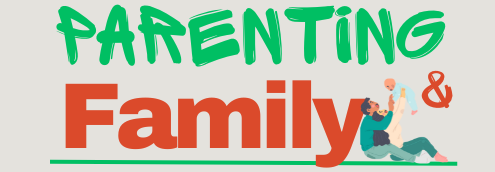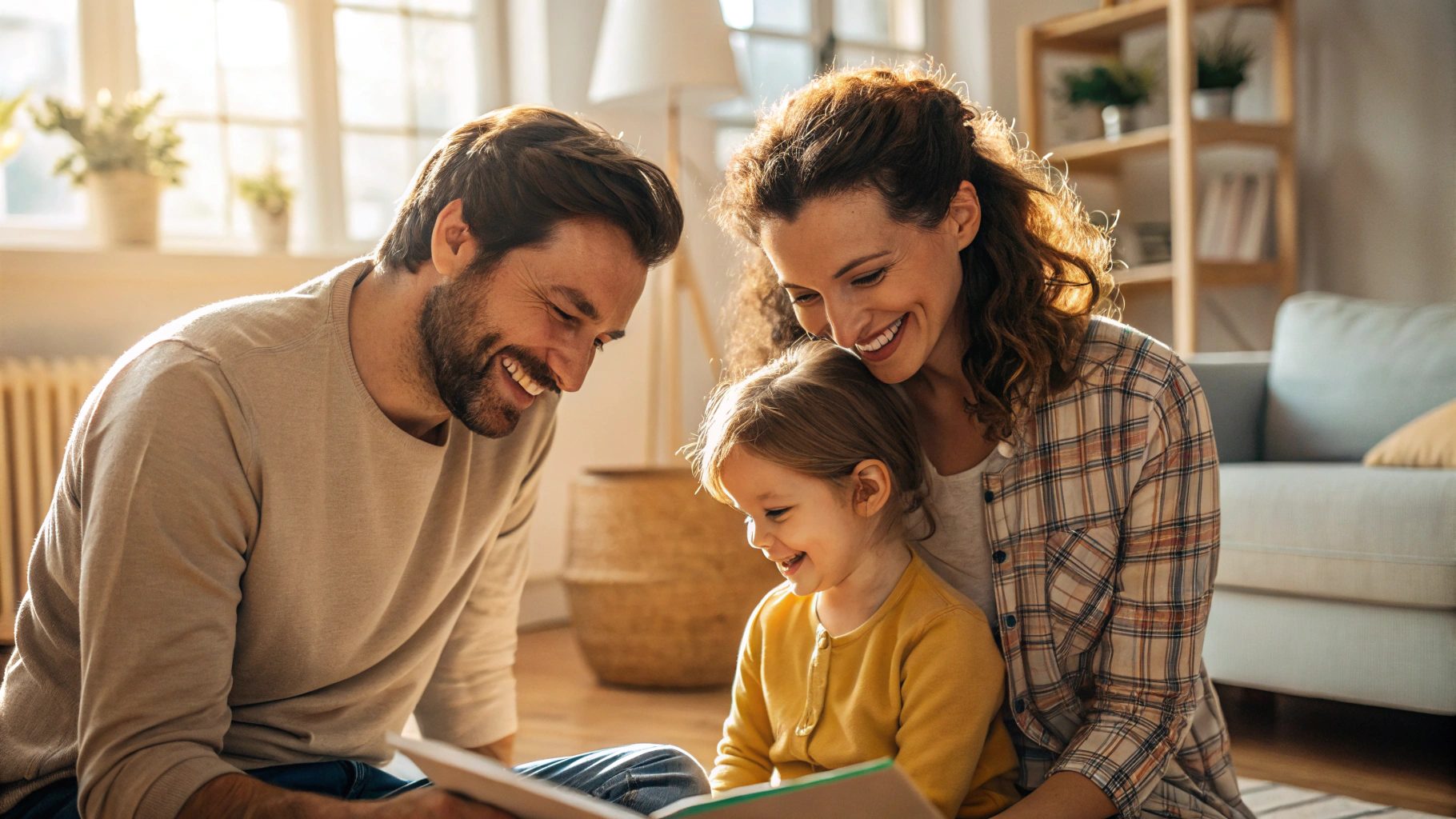I still remember one of my earliest “I have no idea what I’m doing” parenting moments. My three-year-old had just poured an entire box of cereal on the floor—on purpose. As I stood there, knee-deep in crunchy chaos, I could feel the heat rise in my chest. My instinct was to yell. I mean, that’s what my parents did when we made a mess.
But something inside of me paused. I saw those big, curious eyes looking up at me—not defiant, just waiting to see what I’d do next. That’s when I stumbled into the world of positive discipline, and it changed everything about how I parent.
Positive discipline isn’t about letting kids “get away” with things or being a pushover. It’s about guiding our children with firmness and kindness, teaching them respect, empathy, and responsibility—not fear. And honestly? It’s one of the most transforming parenting journeys I’ve ever been on.
What Is Positive Discipline, Really?

Positive discipline is a parenting approach that focuses on connection before correction. It’s rooted in mutual respect and the belief that children want to do well when they feel capable, loved, and understood.
Instead of punishment or harsh consequences, it uses teaching moments to guide behavior. You’re still setting boundaries, but you’re doing it with empathy and understanding.
It’s a shift in mindset: from “How do I make my child behave?” to “How can I help my child learn to manage themselves?”
This method doesn’t just build cooperation—it builds character.
Why Positive Discipline Works (Even When It Feels Like It Doesn’t)
I’ll be honest: positive discipline isn’t always easy—especially on those days when you’re exhausted, the laundry’s overflowing, and your five-year-old decides that pants are optional. But it works because it builds long-term habits, not short-term obedience.
Here’s why:
- It strengthens relationships. When your kids trust that you’ll listen, they’re more likely to open up and less likely to rebel.
- It teaches problem-solving. Instead of shame, your child learns accountability and repair.
- It models emotional regulation. When you stay calm, your child learns calm.
- It fosters intrinsic motivation. Kids learn to behave well because it feels right, not just to avoid punishment.
In fact, research supports that positive discipline encourages social competence and emotional intelligence—skills far more valuable than mere obedience.
My Turning Point: From Power Struggles to Problem Solving
Our E-book
One of the biggest changes I noticed when I started practicing positive discipline was in how I reacted to conflict.
Before, I’d resort to the classic “Because I said so!”—which, let’s be real, just fueled more pushback.
Now, instead of reacting, I try to connect. I repeat a short mantra in my head: “Connection before correction.”
For example, when my daughter refuses to brush her teeth, instead of demanding compliance, I might say:
“I see you don’t want to brush right now. What’s up? Can we do it together and make it a race?”
Suddenly, it’s not a battle—it’s teamwork.
It’s wild how showing empathy completely defuses conflict. Kids (like us) simply want to be seen and heard.
The Five Pillars of Positive Discipline
1. Connection Comes First
Children misbehave when they feel disconnected. Before diving into discipline, take a breath and reconnect. A quick hug, eye contact, or a kind word can reset the entire tone of the moment.
Think of it as emotional fuel—kids need it before they can follow directions or cooperate.
Try this: Spend 10 minutes each day giving your child your full attention—no phone, no multitasking. It builds a bridge that discipline can safely travel across.
2. Set Clear, Consistent Boundaries
Positive doesn’t mean permissive. Kids feel secure when they know the limits. The key is ensuring boundaries are firm and explained with respect.
For example:
“We don’t hit. If you’re angry, you can use your words or stomp your feet.”
Not: “If you hit again, you’re grounded for a week!”
Boundaries are guide rails, not punishments. They remind your child that freedom and responsibility go hand-in-hand.
3. Encourage, Don’t Bribe
Encouragement sounds like:
“You worked really hard on that puzzle! You didn’t give up.”
Bribery sounds like:
“If you behave at the store, I’ll buy you a toy.”
One builds inner motivation. The other builds short-term compliance. Celebrate the process, not just the result.
4. Problem-Solve Together
Let your child be part of the solution. It nurtures responsibility and critical thinking.
If your child keeps forgetting their backpack, instead of punishing, ask:
“What could help you remember next time?”
They might suggest putting it by the door—boom, problem solved by them, not for them.
5. Model What You Want to See
Children copy what we do, not what we say. If you yell, don’t be surprised if they do too. And if you apologize, they’ll learn humility and empathy.
When I lose my patience (and believe me, it happens!), I make sure to say:
“I’m sorry I shouted. I was frustrated, but it’s not okay to yell. I’ll do better next time.”
That small step shows your child that mistakes are part of learning—not shame.
Practical Ways to Practice Positive Discipline (When You’re Running on Empty)

1. Pause Before Reacting
Take a deep breath. Count to ten. Sometimes that tiny pause is what saves us from saying something we’ll regret.
2. Use “When/Then” Statements
“When you finish your homework, then we can play.”
This pattern respects both your authority and your child’s autonomy.
3. Create Family Routines
Routines reduce chaos and meltdowns by helping kids know what to expect.
If you need a framework for this, check out my guide on The Ultimate Family Planner Guide: How to Organize Your Busy Household Life. It’s packed with ways to create family routines that actually work.
4. Offer Limited Choices
Choices give kids a sense of control.
“Do you want to wear the blue pajamas or the green ones?”
It works like magic with toddlers. Trust me.
5. Use Logical Consequences
If your child spills juice, the natural consequence is cleaning it up—not losing screen time for two days. Logical consequences teach responsibility, not resentment.
When Positive Discipline Feels Hard (Because It Will)
There will be days when your patience disappears faster than your coffee. When you yell and immediately regret it. When your child tests every boundary just to see if it still holds.
It’s okay. You’re human.
Positive discipline isn’t about being perfect—it’s about being intentional. Every time you choose empathy over anger, you’re rewiring not just your child’s brain, but your own.
And every “I’m sorry” is a powerful lesson in humility.
Building a Home Where Discipline Feels Like Love
Imagine this: Your child spills paint all over the table. Instead of punishment, you help them clean it up, talk about what went wrong, and brainstorm how to prevent it next time. You laugh about it later, and the world keeps spinning.
That’s what positive discipline builds—a family culture rooted in respect, learning, and love.
It’s not about suppressing behavior; it’s about equipping your children to self-regulate.
It’s about helping them understand why certain behaviors matter, not just forcing them to comply.
How to Stay Consistent
Consistency is the hardest part—and the most vital.
Here’s how to make it easier:
- Have weekly family meetings. Use them to discuss routines, celebrate wins, and plan out challenges.
- Keep communication open. Let your kids speak, even if you don’t agree.
- Reflect on what worked and what didn’t. Growth is a family process.
Even when you slip up, what matters most is returning to connection. Every reconnection builds trust.
Positive Discipline Through the Ages
- Toddlers (1–3 years): Focus on distraction, redirection, and showing gentle empathy.
- Preschoolers (3–5 years): Introduce logical consequences and simple emotion naming.
- Elementary-aged kids (6–10 years): Involve them in problem-solving.
- Tweens & teens (11+): Foster independence through trust, collaboration, and respectful dialogue.
Positive discipline grows with your family. It’s not a one-size-fits-all solution—it’s a family mindset.
Final Thoughts: You Are Your Child’s Safe Space
It took me years to realize this: my child doesn’t need a perfect parent—they need a present one.
Positive discipline has taught me that love and limits can—and should—coexist. Some days will be loud, messy, and downright chaotic. But every patient conversation, every gentle boundary, and every intentional pause helps build the foundation for a peaceful home.
So the next time you find yourself teetering between yelling and connecting, remember—you’re already doing the most important thing: showing up with love.
💛 Motivational Summary
Positive discipline transforms everyday chaos into opportunities for growth. It’s not about control—it’s about connection. By balancing kindness with firmness, you create space for your child to learn cooperation, empathy, and self-discipline.
Every hard moment you navigate calmly becomes part of your child’s emotional foundation. And in teaching them how to handle life with respect and resilience, you’re building stronger humans—and a gentler world.
“Children are not a distraction from more important work. They are the most important work.” — C.S. Lewis
So keep showing up, keep learning, and keep choosing love over control.
You’ve got this, parent—you really do.
If you enjoyed this post, you might also love:
👉 The Ultimate Family Planner Guide: How to Organize Your Busy Household Life
(Because a little planning magic makes positive discipline even easier).





